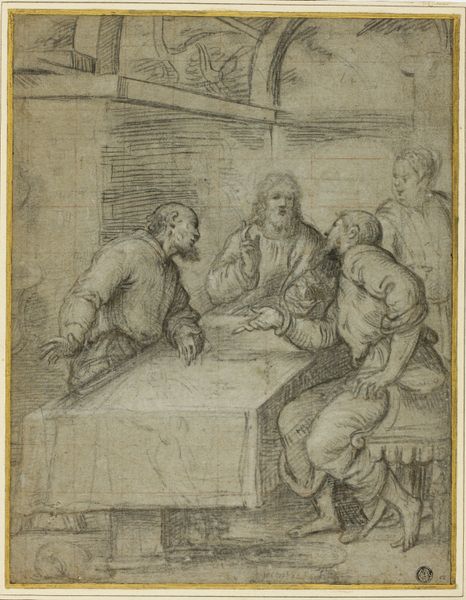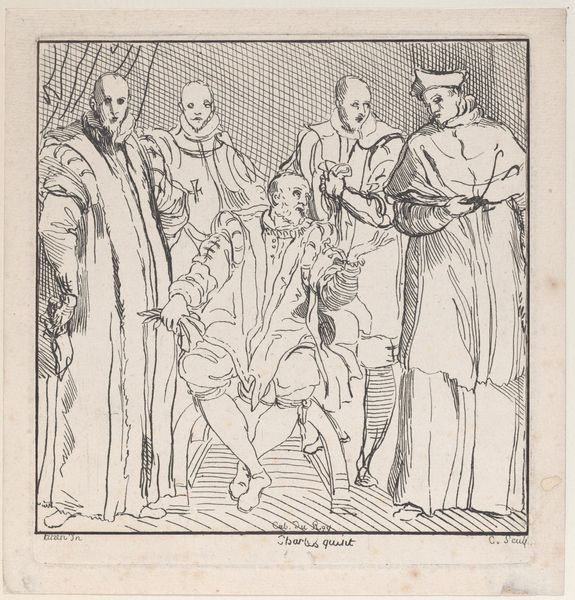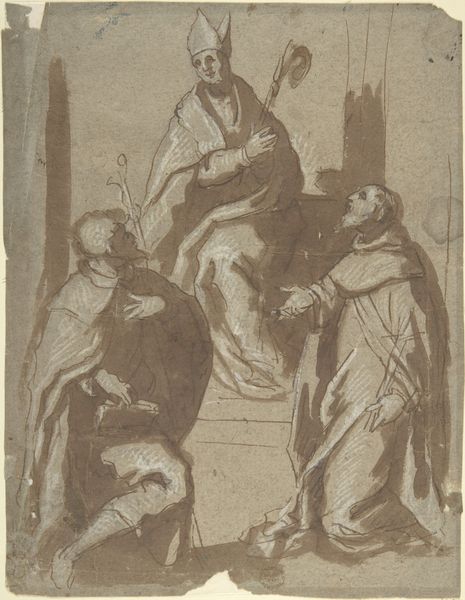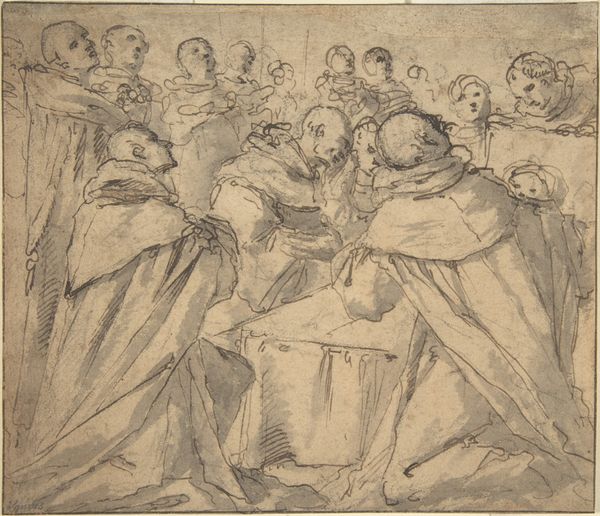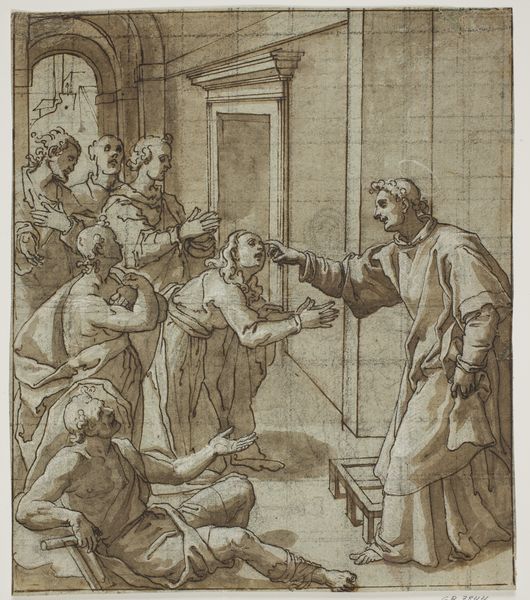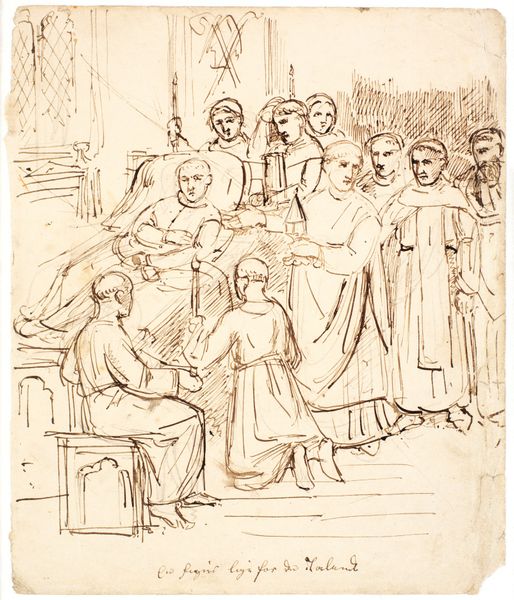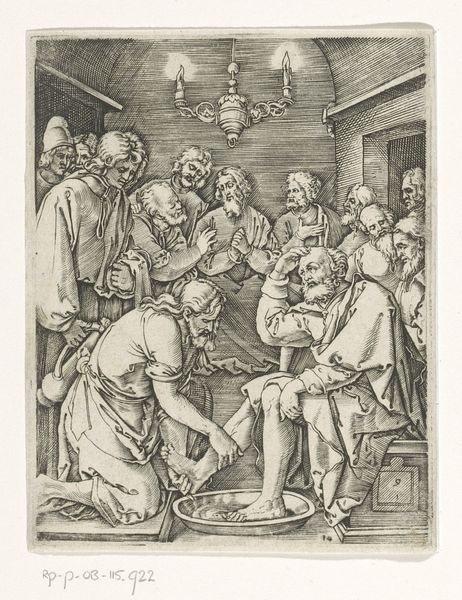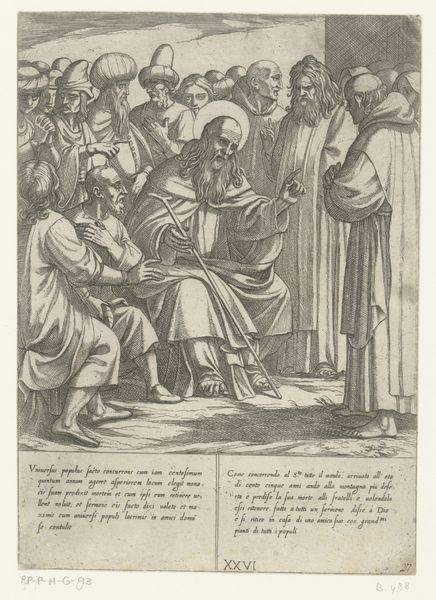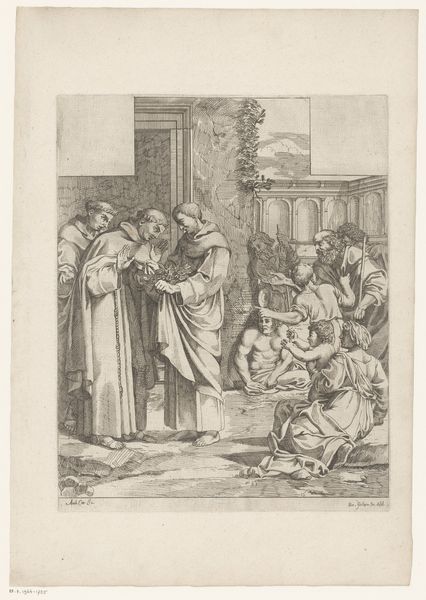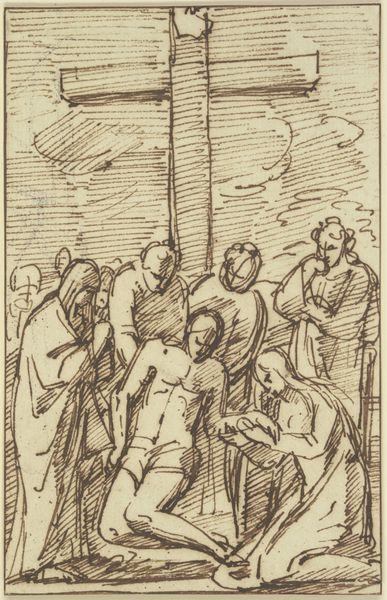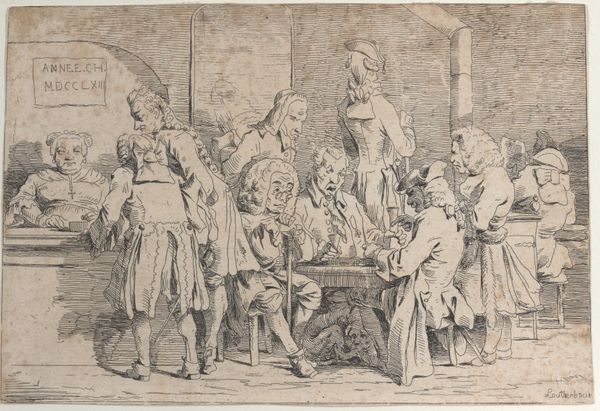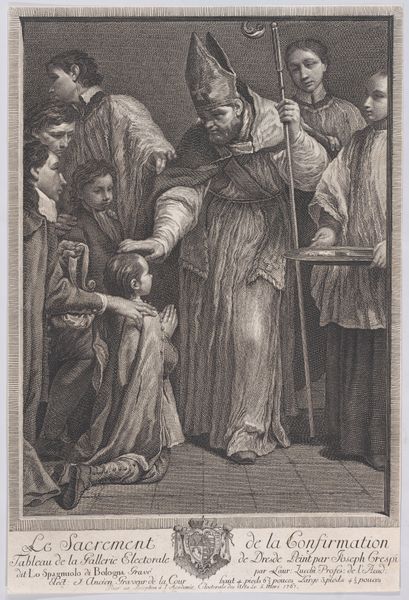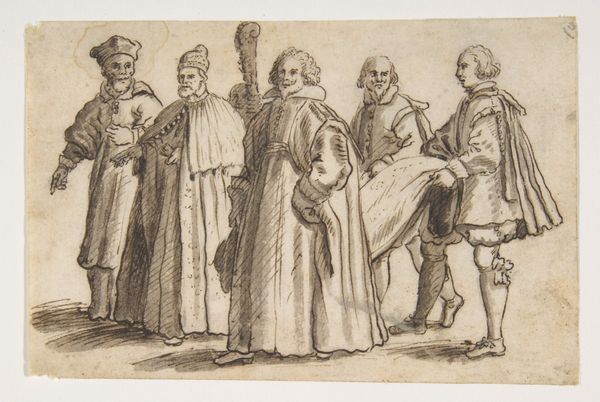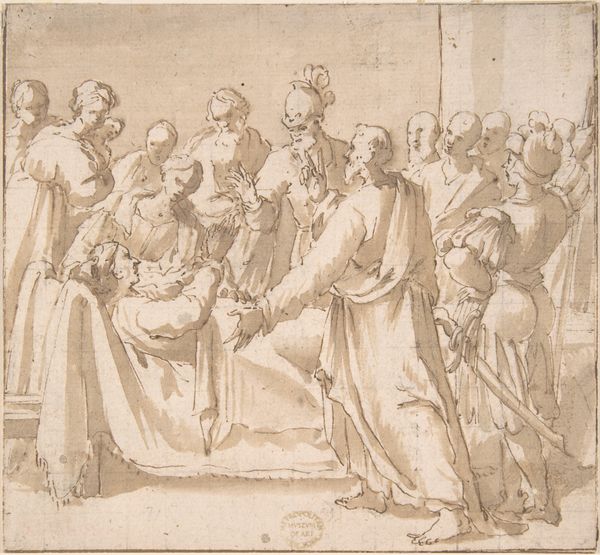
Pope Paul V issuing the bull "Universi agri domini" of 1612 1600 - 1624
0:00
0:00
drawing, paper, ink
#
portrait
#
drawing
#
baroque
#
charcoal drawing
#
figuration
#
paper
#
ink
#
history-painting
Dimensions: 224 mm (height) x 173 mm (height) (bladmaal)
Curator: I’m struck by the tonal range in this piece; it seems deceptively simple, almost monochromatic, but it really showcases the mastery of drawing. Editor: Indeed. What we are looking at is a drawing attributed to Giovanni Battista Ricci, made sometime between 1600 and 1624. The artwork, currently held at the SMK, Statens Museum for Kunst, is titled "Pope Paul V issuing the bull 'Universi agri domini' of 1612." It’s rendered in ink, charcoal, and possibly other drawing media, on paper. The subject depicts the pontiff surrounded by figures, seemingly during an official event. Curator: The process and deliberate application of ink washes create a sense of depth. Look at how the artist plays with light and shadow to model the forms of the figures, especially the drapery, really dynamic. Editor: From a historical perspective, it's important to understand the function of papal bulls during this period. "Universi agri domini," which translates roughly to "The field of the Lord everywhere," indicates the reach and authority of the Church. It gives you a glimpse into the politics of imagery. Curator: The bull itself, a formal pronouncement or decree, becomes a material object imbued with power, circulated and interpreted throughout the social landscape. The gesture of the Pope issuing the document; it’s about production of power, visualized! Editor: Exactly! The scene stages that power so the materiality reinforces the institutional structure of the Catholic Church during a turbulent time. And note the onlookers, seemingly important dignitaries, placed to bear witness. This visual display strengthens its power as well as the church's presence. Curator: The hierarchy is certainly visible here: the Pope elevated on the dias while other are standing or kneeling creates an implied material condition of social dominance, very powerful. Editor: Definitely. Studying "Pope Paul V issuing the bull" offers valuable insight into the political landscape of the early 17th century and how artistic representation played a critical role in shaping perception. Curator: And how the act of creation using ink, paper and drawing became an important piece of evidence from the time. It gives new perspectives and dimension to an art that often falls in the shadows. Editor: Ultimately, it provokes a thoughtful investigation into image politics, the exercise of papal authority, and of course art making.
Comments
No comments
Be the first to comment and join the conversation on the ultimate creative platform.
